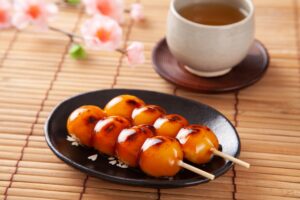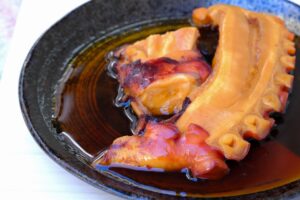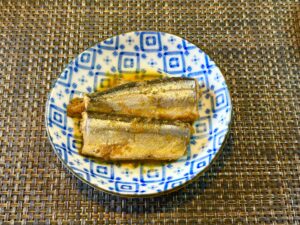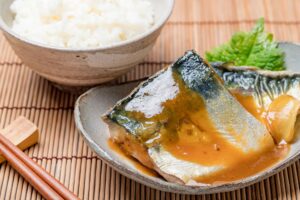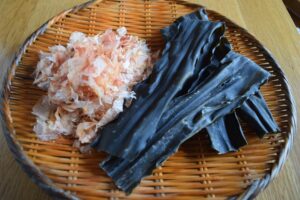Tonjiru (also known as Butajiru) is a comforting Japanese soup made with pork, root vegetables, and miso—a richer and more filling alternative to traditional miso soup. In this article, we’ll explore what makes Tonjiru special, its origins, how to prepare it, and even vegan adaptations and regional differences.
What Is Tonjiru?
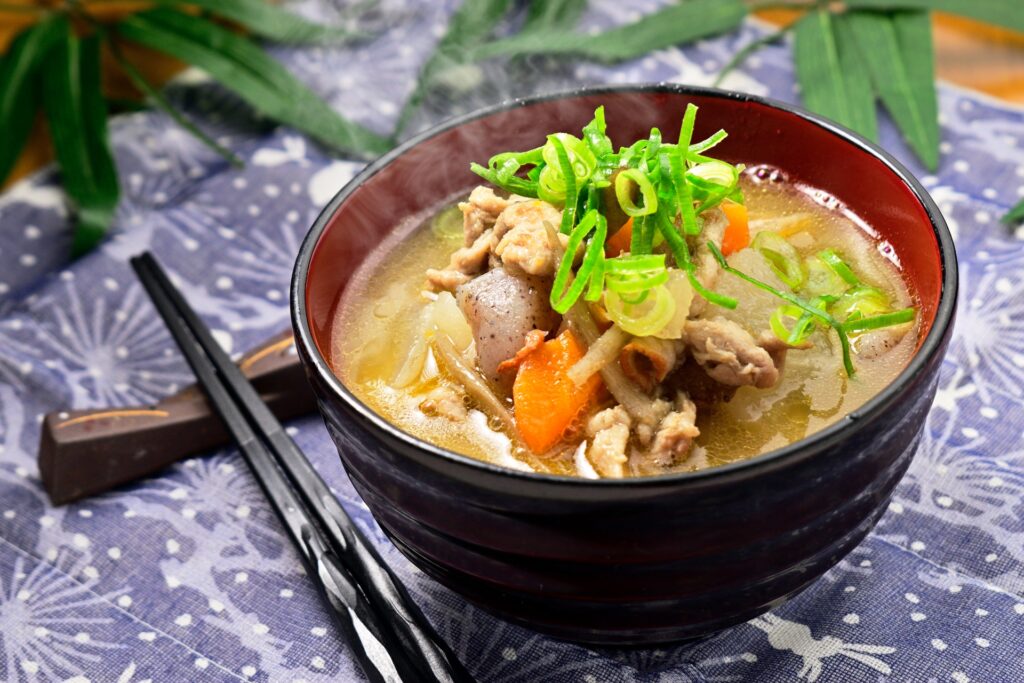
Tonjiru (豚汁, pronounced tohn-jee-roo), also known as Butajiru (ぶたじる), translates literally to “pork soup” in Japanese. It’s a rich, comforting miso-based soup enhanced with pork slices and hearty vegetables like daikon, carrots, konnyaku, and burdock root. Unlike standard miso soup, which is typically light and made with tofu and seaweed, Tonjiru is a more substantial, stew-like dish. It’s especially popular during colder months due to its warming nature and nourishing ingredients.
Tonjiru stands out for its use of pork belly, which adds a savory depth and umami not found in lighter soups. The miso paste in Tonjiru is often darker and more robust (such as red miso or mixed miso), which pairs well with the fatty richness of the pork. This dish exemplifies Japanese comfort food—deeply satisfying, packed with flavor, and easy to customize with seasonal ingredients.
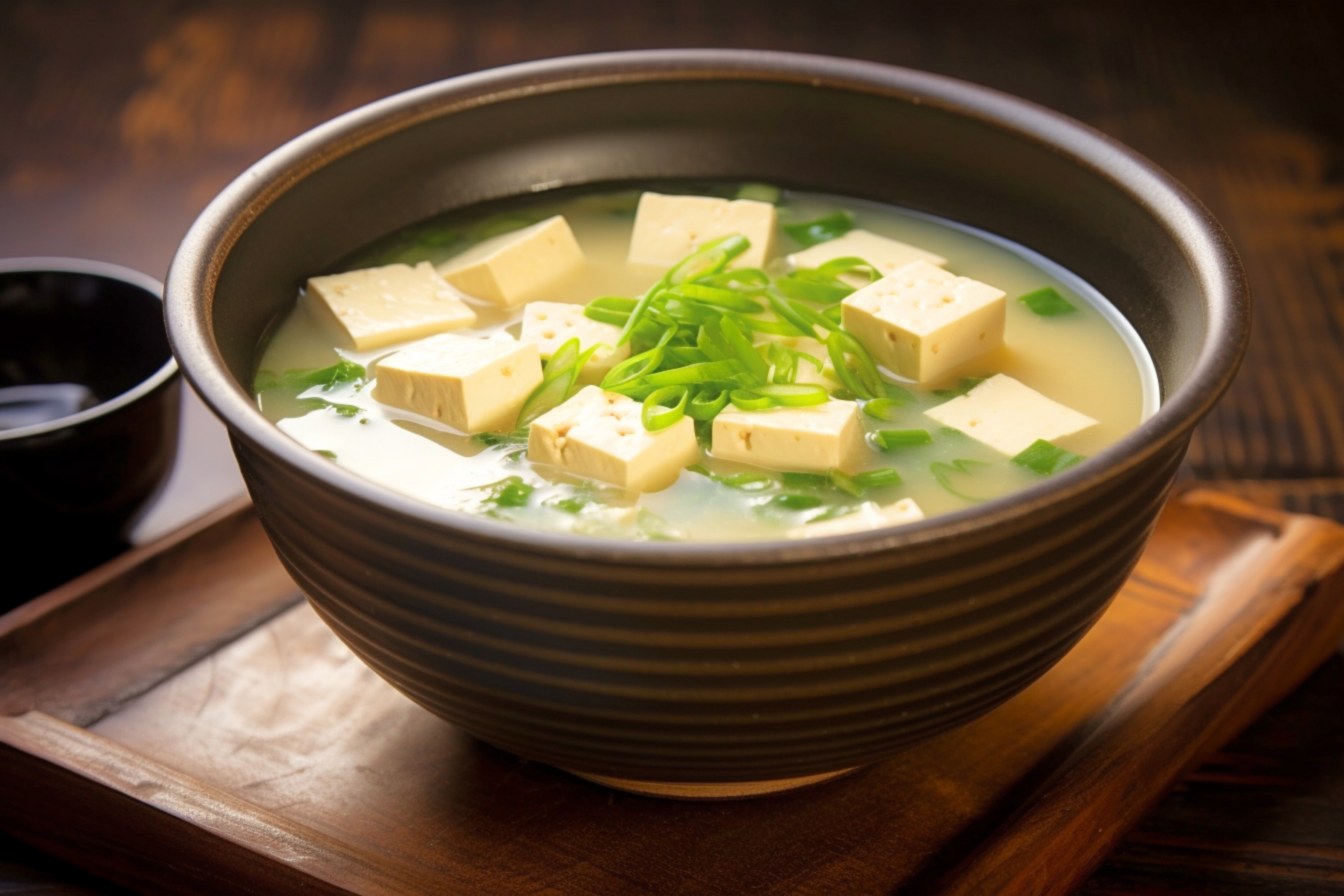
The History and Cultural Roots of Tonjiru
Tonjiru has deep roots in Japanese rural life. Originally developed as a hearty meal for farmers and laborers, its origins are often linked to agricultural communities where preserved root vegetables and pork were common. It later found a place in military cuisine during the Meiji era, offering soldiers a warming and protein-rich meal in cold conditions.
Over time, Tonjiru became a staple winter dish in Japanese homes, schools, and even ski resorts. It symbolizes a practical, nourishing form of Japanese home cooking, often prepared in large batches to feed families or communities. The soup’s ingredients vary slightly by region, reflecting local produce and food culture, but its essence—a deeply satisfying, umami-rich miso soup with pork and vegetables—remains the same.
Ingredients and How to Make Tonjiru at Home

Core Ingredients:
- Thinly sliced pork belly or shoulder
- Daikon (Japanese radish)
- Carrots
- Konnyaku (yam cake)
- Gobo (burdock root)
- Shiitake mushrooms (optional)
- Green onions for garnish
- Miso paste (preferably red or awase miso)
- Dashi broth (can be from kombu, bonito flakes, or instant powder)
- Sesame oil (for sautéing)
Step-by-Step Instructions:
- Prepare the ingredients: Cut all vegetables into bite-sized pieces. Parboil konnyaku and slice thinly. Soak burdock root in water to remove bitterness.
- Sauté pork: In a large pot, heat sesame oil and cook the pork until it’s no longer pink.
- Add vegetables: Add root vegetables and konnyaku. Stir-fry briefly to combine flavors.
- Add dashi: Pour in enough dashi to cover ingredients. Bring to a boil, then simmer until vegetables are tender.
- Add miso: Dissolve miso paste using a ladle and chopsticks, avoiding direct boiling which can degrade flavor.
- Garnish and serve: Top with sliced green onions and serve hot.
Ingredient Substitutions:
- Use regular radish or turnips if daikon is unavailable.
- Replace konnyaku with tofu or omit.
- Use vegetable broth instead of dashi for a pescatarian version.
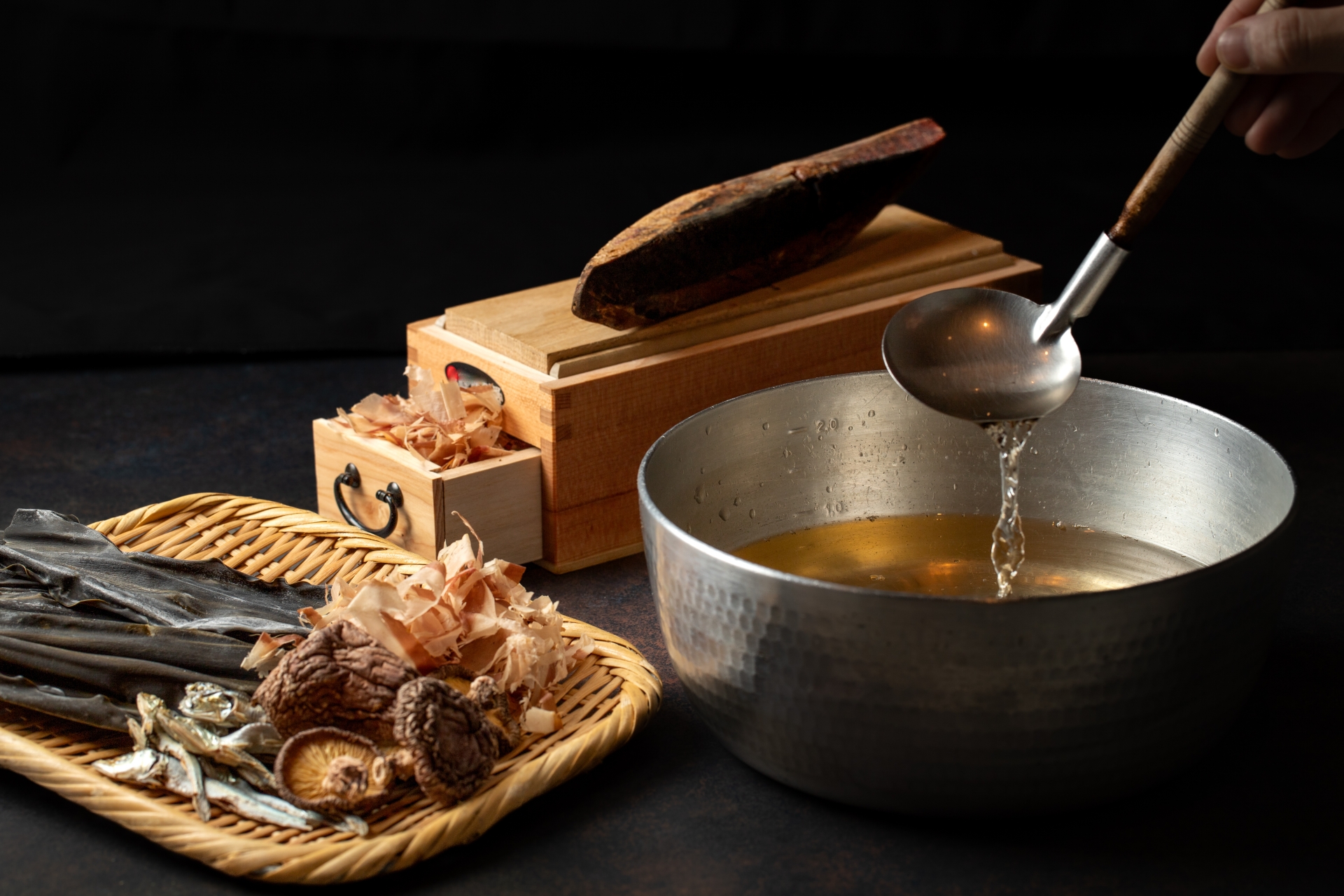
Tonjiru vs. Miso Soup: Key Differences
| Feature | Tonjiru | Miso Soup |
| Broth Base | Miso + pork + dashi | Miso + dashi only |
| Protein | Pork slices | Tofu (usually) |
| Ingredients | Root vegetables, konnyaku, pork | Seaweed, tofu, scallions |
| Flavor | Rich, savory, hearty | Light, mild |
| Cultural Context | Winter food, rural origins | Everyday meal staple |
Regional Variations of Tonjiru Across Japan
Tonjiru varies widely by region, incorporating local ingredients:
- Hokkaido: Adds butter or milk for extra richness and warmth.
- Kyushu: Includes sweet potatoes instead of carrots.
- Nagano: Often features wild mushrooms and mountain vegetables.
- Tohoku: May use fermented miso unique to the area and local root vegetables.
These differences reflect Japan’s seasonal and regional culinary diversity. A Japan map graphic showing these variations would visually enhance this section.

Tonjiru or Butajiru? Regional Differences in Naming
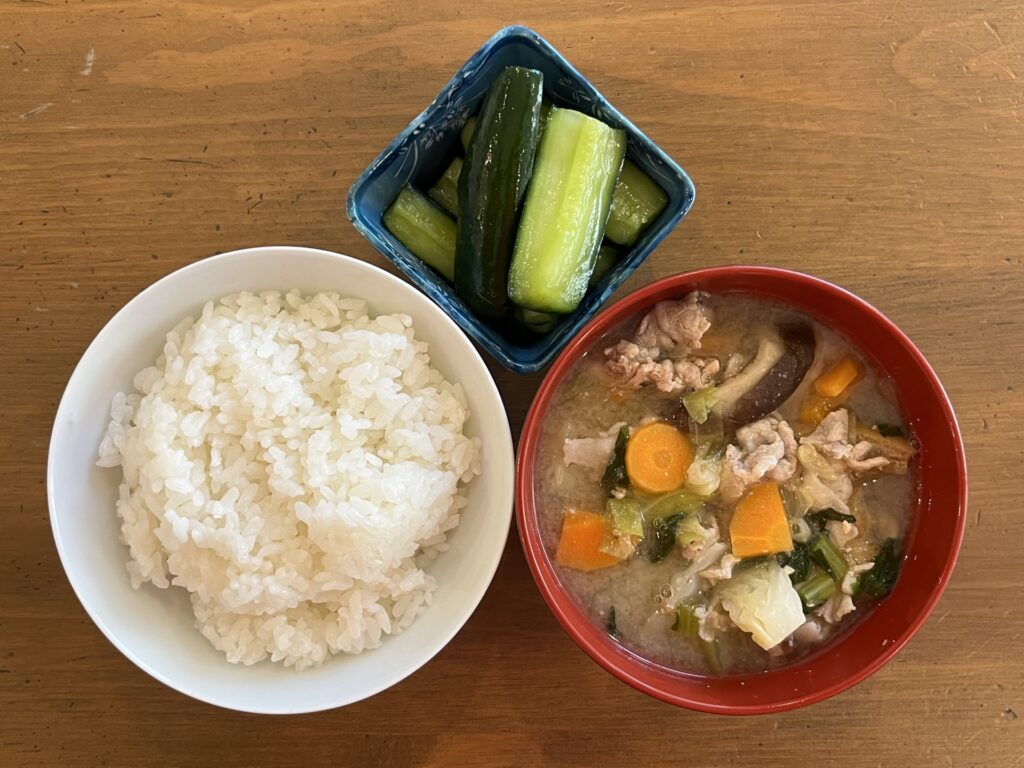
The kanji for Tonjiru, “豚汁,” literally means “pork soup.” However, pronunciation varies:
| Region | Common Pronunciation |
| Eastern Japan (Kanto, Tohoku) | Tonjiru (とんじる) |
| Western Japan (Kansai, Kyushu, Hokkaido) | Butajiru (ぶたじる) |
Despite the difference in name, both refer to the same hearty soup. The naming often reflects local dialects and historical preferences.
Health Benefits and Nutrition of Tonjiru
Tonjiru is not only satisfying but also nutritious:
- High protein from pork
- Rich in fiber and vitamins from vegetables like daikon, carrot, and burdock root
- Probiotics and enzymes from miso, promoting gut health
A typical serving of Tonjiru contains about 150–250 calories, depending on pork fat content and portion size. Compared to regular miso soup, it’s more calorie-dense but also more nutrient-rich. When compared to Kenchinjiru (a vegetarian root vegetable soup), Tonjiru offers more protein but fewer antioxidants.
Tonjiru for Special Diets: Vegetarian and Vegan Options
You can make vegetarian or vegan Tonjiru with a few tweaks:
- Protein substitute: Use firm tofu or seitan instead of pork.
- Umami base: Use kombu and dried shiitake mushroom dashi.
- Flavor enhancements: Add sesame oil, miso, and soy sauce to deepen the flavor.
While it may lack the pork umami, the depth of vegetables and fermented miso can still make it incredibly satisfying. Try adding roasted mushrooms or smoked tofu for extra richness.
Storage, Reheating, and Meal Prep Tips
Tonjiru stores beautifully, often tasting better the next day as flavors meld.
- Refrigeration: Store in an airtight container for up to 3 days.
- Freezing: Portion into freezer-safe containers for up to 2 weeks.
- Reheating: Warm gently on the stove over low heat. Avoid boiling to preserve miso flavor.
For meal prep, chop all veggies ahead and freeze in packs. When ready, just sauté pork, add frozen veggies, broth, and miso.
Final Thoughts: Why You Should Try Tonjiru
Tonjiru is more than just a soup—it’s a taste of Japanese home cooking and seasonal living. Rich in flavor, packed with nutrients, and deeply comforting, it stands out from other miso-based dishes. Whether you’re looking for a hearty winter meal, a nostalgic reminder of Japan, or a new twist on miso soup, Tonjiru is worth making. Don’t hesitate to add your own touch by using local vegetables or trying a plant-based version. It’s an easy, versatile, and utterly satisfying dish that belongs in every soup lover’s repertoire.




